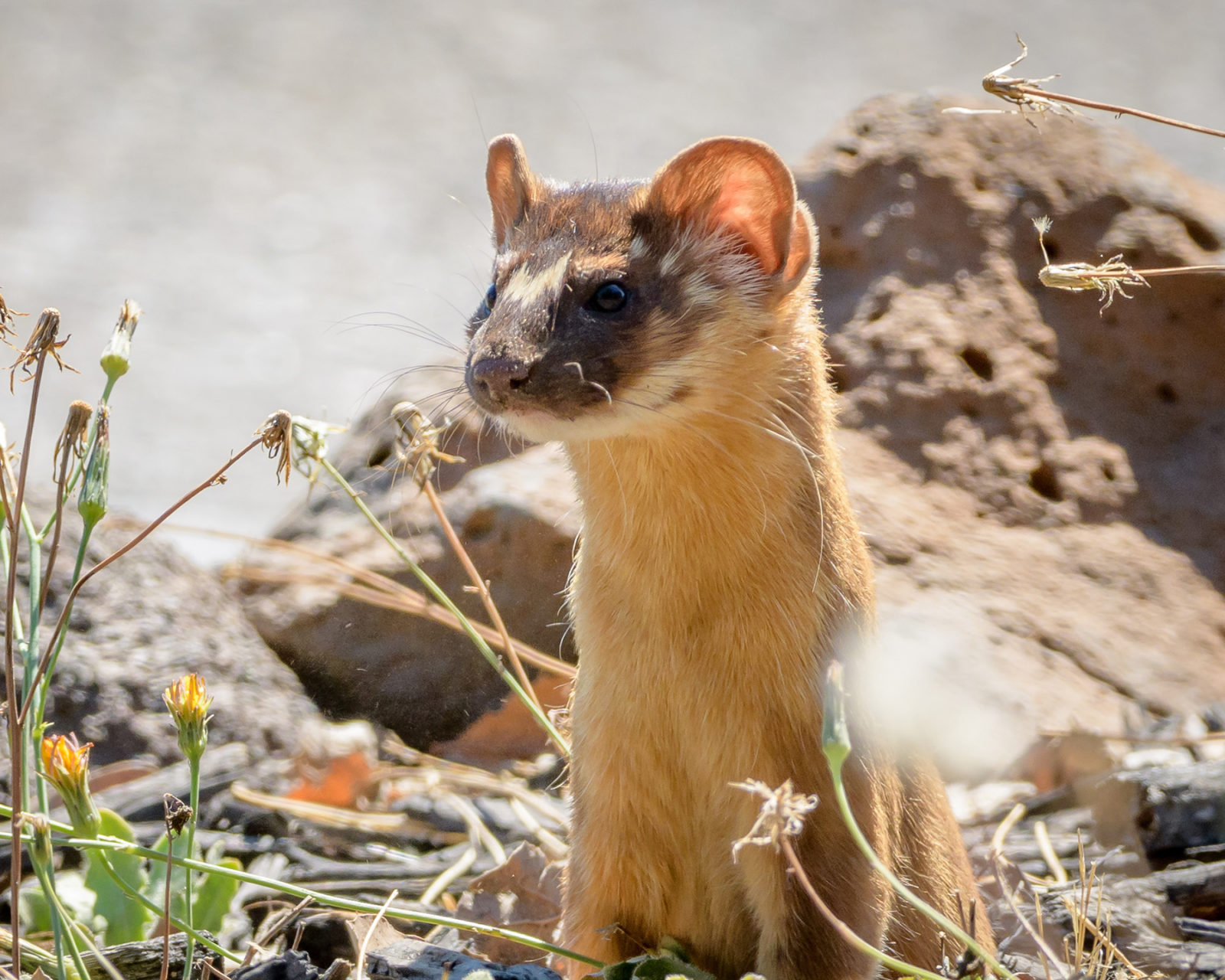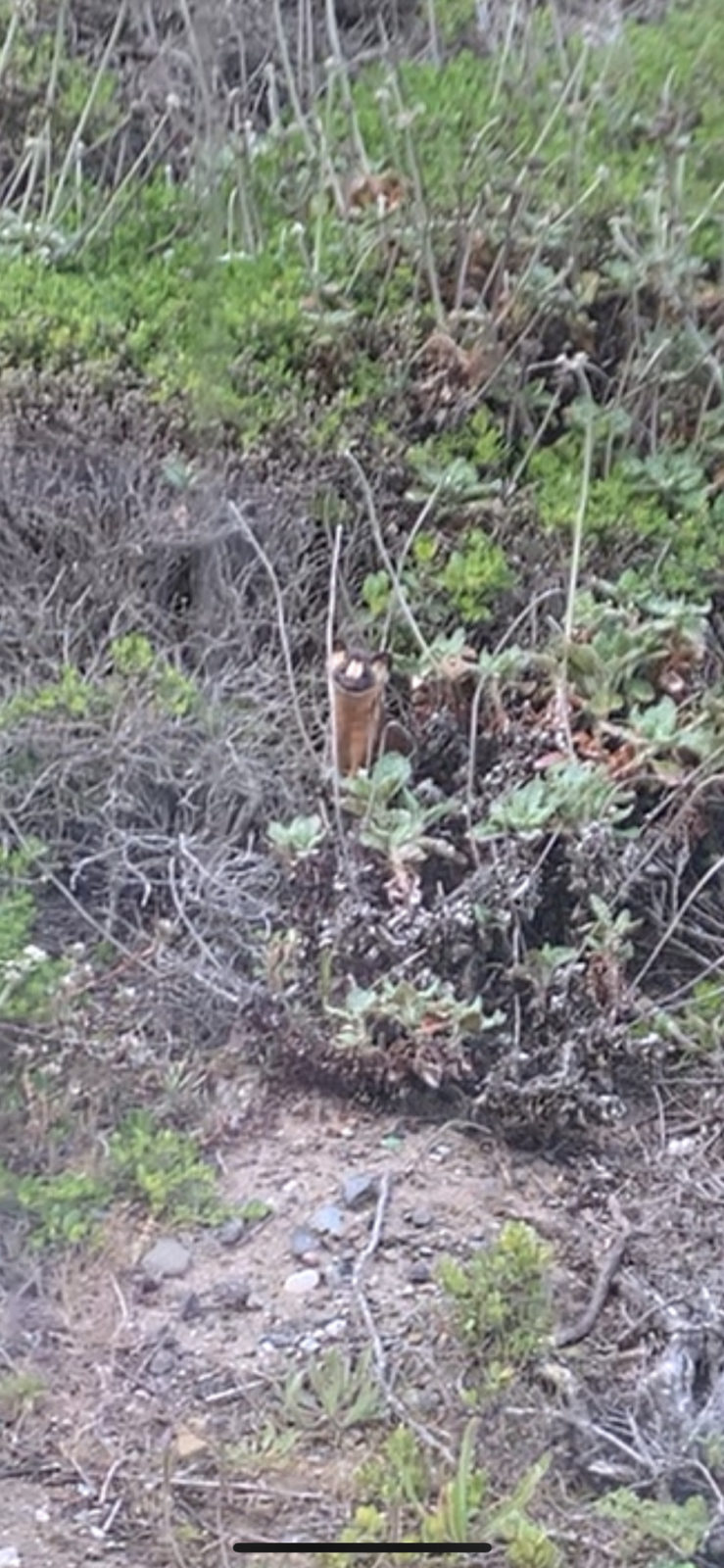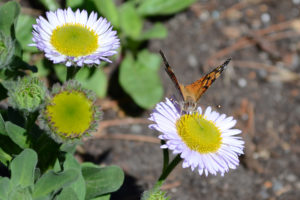
Erica Spotswood, the science director of the San Francisco Estuary Institute’s Urban Nature Lab, got her dissertation studying seed dispersal on the French Polynesian islands of Tahiti and Moorea. A kind of low-growing fruit tree named Miconia calvescens had arrived in Polynesia from Central America sometime in the 1930s and rapidly spread across the tropical islands, leaving ecological devastation in its wake. The Global Invasive Species Database lists Miconia calvescens as one of the worst invasive species in the world; in Hawaii it is sometimes called the “purple plague” while in French-speaking Tahiti it is “le cancer vert.” Spotswood wanted to better understand how the tree moved so quickly across the islands.
Her studies looked specifically at how birds might spread seeds and allow Miconia calvescens to cross otherwise impassible ridges and cliff faces. She found, generally, that native Polynesian fruit doves had switched their diet to eat more Miconia calvescens, accelerating the invasion. But underlying the study were bigger questions about islands and nature. A volcanic Pacific island like Moorea or Tahiti has a unique ecological history: it rose lifeless from the bottom of an ocean thousands of miles from the mainland and then, over hundreds of thousands of years, plants and animals found it, settled and radiated into new species. An invader like Miconia disrupts an intricate evolutionary process.
Relative to mainland tropical forests, tropical islands have low terrestrial biodiversity. (What’s in the water is another story entirely.) Spotswood came away from her time in Moorea nonetheless impressed at what biodiversity islands do have. Every species of land bird, every amphibian and insect and plant, comes from a founder that managed somehow to cross an ocean to get there. These are not things, generally speaking, that land birds, amphibians, insects, and plants do. “It’s almost mind-boggling that you have that many species given how hard it is for anything to get there,” Spotswood says. As a result, she says, ideas about how to conserve island biodiversity have to take into account the role of these different factors of how difficult it is for life to arrive, how essentially random that arrival might be, and how long it might take.
For the last five years at SFEI, Spotswood has focused on nature in the cities of the Bay Area. The Urban Nature Lab has published reports on reintroducing oak trees to Silicon Valley, on better managing Bay Area sports fields for nature, and on monitoring and categorizing city species. Of late, Spotswood and her colleagues have worked with ecologists at the Presidio Trust in San Francisco on how to make the Presidio a safe harbor for quail.
Quail went officially extinct from San Francisco in the last few years, but the trajectory toward extinction was clear for much longer. You can see the species “winking out,” Spotswood says, in the last eBird record for quail in each of the city’s parks: Ocean Beach in 1978, Bernal Heights in 1987, Sutro and Lands End in 1995, McLaren Park and Lake Merced in 1998. The slow disappearance, park by park over a matter of decades, fits a pattern ecologists sometimes call an “extinction debt,” in which a species is still present in an area but, because of background change, ultimately doomed.
The last quail was seen in the Presidio in 2006, and the debt finally paid off when the last quail in San Francisco disappeared from Golden Gate Park in 2017. Over the last 15 years though, ecologists at the Presidio have remade the 1,500-acre urban park into a more hospitable place for a variety of wildlife. Bees, butterflies, coyotes, foxes and fish have returned. It’s become something like the opposite of the extinction debt, Spotswood says. Maybe you could call it a discovery debt. More animals might thrive in the Presidio than currently live there; they just need to find it.
Presidio Trust ecologists Lew Stringer and Jonathan Young considered helping that rediscovery process by reintroducing quail to the Presidio directly. But before they did so, they wanted to know if it would actually work. Spotswood and SFEI had the idea that you could use eBird data on where quails are found in urban parks, and match that with the different characteristics of those parks, to build a statistical model of what kinds of city parks work for quails.
Of course lots of different factors play a role in making a park successful for small ground birds – vegetation, cover, predators. But in the analysis, led by SFEI environmental scientist Kelly Iknayan, two stood out as particularly important. One was the size of the park. You might consider this akin to a measure of how big the island is. The other, more of a surprise, was the distance from the park to the edges of town. In other words, how big is the ocean around the island. “Is it the ability for a park to be colonized — for quail to get to that park?” Iknayan says. “Or was it the ability for the quail to stay in the park?”
According to their paper, published in fall 2021 in the Journal of Applied Ecology, the Presidio is plenty big enough to be home to quail. Quail are ground birds, meaning they can fly but generally choose not to. A quail, alas, cannot or does not walk across the Golden Gate Bridge; repopulation from Marin is out. So the closest land distance from the Presidio to a current quail population is across the pavement of the city to the quails of San Bruno Mountain and Milagra Ridge. That is a long, long way for a quail to walk.
“If they can get there they’re likely to stay there,” Spotswood says. “But the probability of them getting there is low. In a sense it’s the same phenomenon as a remote oceanic island. If the thing can get there, if the island is big enough and has good habitat, whatever arrives there will be able to stay there. But if for whatever reason it goes extinct, the probability it will be reintroduced is very low.”
Finally, at last, we have crossed our own ocean to the point of this story. On May 5, a water treatment worker spotted a long-tailed weasel running through a stand of coyote brush in the Presidio. The sighting seemed to Presidio Trust restoration ecologist Jonathan Young like the first great hint of an answer. A long-tailed weasel hasn’t been officially documented in the Presidio since the 1950s. They’re vanishingly rare in San Francisco, with only one other record in the community science platform iNaturalist. How did the weasel get to the Presidio?

It ran. From somewhere not in San Francisco. The other iNaturalist sighting of a long-tailed weasel from San Francisco is on the Great Highway last November. Young thinks this might just be one bold explorer weasel with a yearning for travel. That it arrived safely in a place where it might be able to live – that’s “exciting,” Young says. This animal walked across the city, navigating the sea of pavement to safety in the vast urban park. It suggests to Young that with slight improvements to the various corridors connecting the Peninsula with the north edge of the city, more species might follow.
“The traditional more hands-off [approach] for wildlife restoration, is ‘if you build it they will come,’ but if it’s isolated and they can’t fly there, they’re not getting there,” Young says. “That’s why this weasel is such a cool story. We built it, they came, and hopefully there’s more.”
“It’s a proof of concept,” he adds. “If a weasel could do it, I think it’s possible a quail could do it too.”
The Presidio Trust, SFEI, and others are working on a project funded by the State Coastal Conservancy to study the wildlife corridors along the western side of the city. Part of what makes the weasel’s successful journey exciting is that it suggests the improvements might not need to be on the same scale as the $87 million mountain lion crossing over eight lanes of the 101 freeway in Los Angeles.
Instead Sunset Boulevard, the tree-lined strip that runs north-south from Lake Merced to Golden Gate Park, might be enhanced to make its greenery friendlier to migrating ground birds (and weasels). Iknayan says there are nearly three acres of open space per block along Sunset that might be improved for animal movement. The city’s Slow Streets program and Great Highway closure could also be adapted to favor the occasional animal passerby. Iknayan thinks scientists could even get to the point of fine-tuning the corridors so that the quails are able to disperse and find an optimal genetic mix between populations in the various larger parks.
“It’s important to not just say, ‘We’re stuck with the Presidio as it is, so we’ll overcome that isolation by just reintroducing the birds every 10 years,’” Spotswood says.
Urban parks can act like islands, separated completely from each other by cars, roads, and buildings full of predator cats and rats. The seas around them limit how much nature can return. But humans can knit islands together. The history of Polynesia is one, as the Tongan and Fijian writer Epeli Hau’ofa once put it, not of what the Europeans saw as isolated islands in a far-off sea, but “our sea of islands,” places connected by cultures and cosmologies and well-known navigation corridors, “seen in the totality of their relationships.”
So it’s only one photo of one weasel. Young technically hasn’t even seen it himself. Still, it reminds him that the Presidio might be reconnected to all the other urban islands in San Francisco – and beyond.
“It’s just so cool to see this little creature made it all the way up here, on this kind of loose corridor that with a little attention could be a bigger corridor,” he says. “Which ultimately ties down to the whole Peninsula.”




